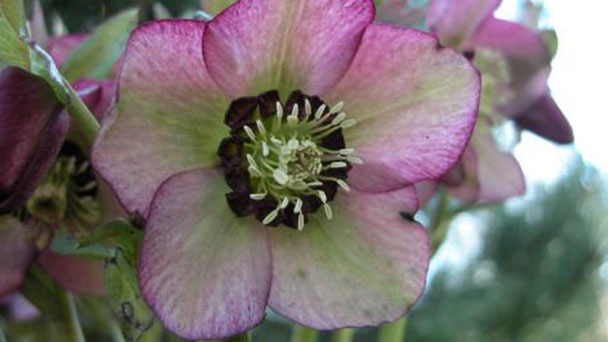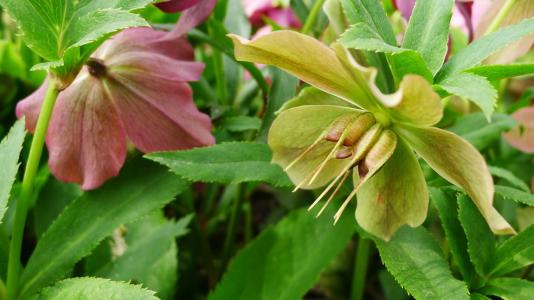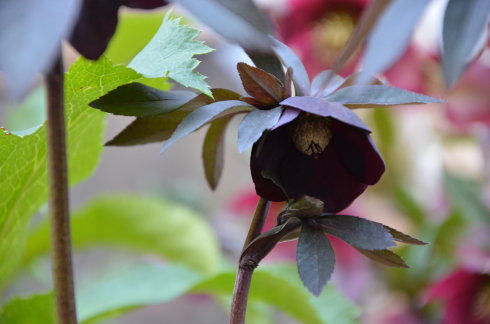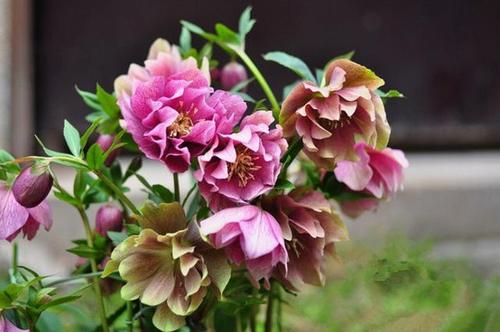How to grow and care for Tibetan hellebore
Written by Maggie
Jan 26 2021

Tibetan hellebore is hardy and generally blooms in April and bears fruit in May. In this way, a lot of people will be very curious about it. How to grow and care for Tibetan hellebore? Let's see
together.

1. Environmental management care
Tibetan hellebore likes to grow in the half cloudy and warm environment, and it's cold resistance is very strong, cream. During the growth of plants, it can be placed on a south-facing balcony maintenance, full of sunshine every day. When a period of high temperature in summer is dormant, shade for a short period of time. After entering the winter. supply more sunlight, and it will blossom.
2. Watering care
Tibetan hellebore likes to grow in a humid environment. During the growing season, it is necessary to keep the basin soil moist frequently. In spring, when the temperature rises, it is in the growth boom period, and watering should increase gradually.
3. Fertilizing care
Periodic fertilization is very important when we care for Tibetan hellebore. After early spring germination, dilute phosphorus and potassium fertilizer can be applied for 2-3 times to promote flower bud differentiation. After flowering, dilute compound fertilizer should be sprayed for 1-2 times properly.

4. Tibetan hellebore care in winter
When the Tibetan hellebore is cultured in winter, it is necessary to keep the soil surface dry and stop watering before the freeze period. The soil is loosened every one month. When the growth of the tibetan hellebore slows down, a thin urea solution can be applied to promote the growth of plants. Attention should be paid to the cultivation. When the leaves shrink and turn yellow, the plants should be moved to a warm room and placed out of reach of children for cultivation.
When growing Tibetan hellebore in winter, it can be placed outdoors for cultivation. Due to its strong cold resistance, it is not necessary to carry out thermal measures for it. The only need is to keep the soil dry and avoid water at the bottom, which will cause stomatal blockage of plant roots and hinder the life activities of the whole plant.
When growing Tibetan hellebore in winter, it is necessary to water the soil before freezing, and turn the soil every one month to ensure that the air permeability and drainage of the soil are good and no plate formation occurs. When the growth retardation and stagnation of Tibetan hellebore occurs, a thin urea solution can be added to accelerate the growth of plants.
When the leaf of Tibetan hellebore grows outdoors in winter and turns inward curly, dry and yellow, it shall be moved indoors for curing in time to ensure that the temperature is above zero degrees Celsius and sufficient illumination time is given to ensure the circulation of air. It can be placed near the balcony or window facing south for culture.
When placing the Tibetan hellebore in indoor culture, it is necessary to pay attention to the placement position and try to place it out of the reach of children. Because the juice secreted by it contains certain toxins, when people contact the skin, the symptoms of redness and itching will occur. When ingested by mistake, it will cause stomach cramps, pain symptoms.

Latest Updated
- Benefits of Bugleweed - 7 Science-backed Health Benefits
- Bugleweed Dangers & Side Effects - Is It Poisonous?
- How to Plant Evergreen Trees - What You Should Know
- When to Plant Evergreens - Grow Guide for Evergreen Trees
- 12 Wonderful Evergreen Shrubs for Your Garden
- 12 Popular Evergreen Plants with Pictures for Beginners
- When And How To Prune A Lilac Bush Like a Pro
- How to Grow & Care for Lilac Vine (Hardenbergia Violacea)
- Japanese Lilac Tree (Syringa Reticulata) Care & Propagation Guide
- Shumard Oak Pros and Cons - What to Know
Popular Articles
- Winter maintenance of Antirrhinum Majus
- How to Grow Terminalia Mantaly Tree
- How to Grow and Care for Crossostephium Chinense
- How to grow Antirrhinum Majus in spring
- Peristeria Elata (Dove Orchid) Profile: Info & Care Guide
- Underwatered Snake Plant (Sansevieria Trifasciata) - Signs And How To Fix
- How to Care for Brazilian Jasmine Plant (Mandevilla Sanderi)
- How to Grow & Care for Graptopetalum Purple Delight in Summer
- Rosa Chinensis (China Rose): Plant Growing & Care Tips
- How to Care for Baby Sun Rose (Aptenia Cordifolia)